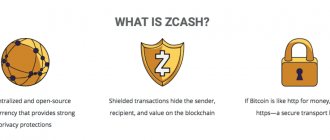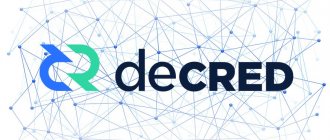- Delegated Proof-of-Stake (DPoS)
Consensus algorithms form the basis of blockchain technology. Today we will talk about this invaluable process in digital security, looking at the best of modern approaches.
The role of protocols
The role of consensus algorithms is to achieve a level of reliability for a network built on a series of nodes (devices connected to other devices as part of a computer network). This means that if a transaction is made, the algorithm will start working - communicating across the network to check if the action can take place.
The same process is also used to create new data nodes on the blockchain or when synchronizing network equipment to ensure that the entire consensus is consistent.
Consensus algorithms must be smart enough to anticipate failures in communication within the network.
The algorithm will automatically assume that some processes and systems will be unavailable and that some communications will be lost as a result. To counter this, the consensus algorithm must be fault-tolerant and work to achieve a predetermined consensus or approval from at least a majority of the machines on the network.
Types of protocols
Not all blockchains are created equal, and many vary greatly depending on the type of consensus algorithm they use.
image is clickable
Proof-of-Work
The most famous consensus algorithm is Proof-of-Work (PoW). It is represented by coins such as Bitcoin, Ethereum and Litecoin. The PoW approach was the first such algorithm and continues to be widely used today.
PoW is a simple design that is known to be highly resistant to cyber attacks. This approach is entirely dependent on the computing power of each network member to solve problems and reach consensus on a transaction.
The fact that it requires input on its network makes PoW very difficult to crack (any successful attack would require at least 50% of the hashing power of the entire network), but it also makes it extremely expensive in terms of power consumption. By some estimates, Bitcoin uses 32 TWh of energy per year, which is roughly equal to the amount of electricity used by all of Denmark.
As a result, many industry experts believe that while PoW is reliable, the protocol is starting to lose its relevance a bit, and coins like Ethereum are said to be exploring alternative measures to secure their decentralized networks. In addition, FOTON calculated that the entire crypto industry could save about $36 billion per year by abandoning PoW.
Proof-of-Stake
Proof-of-Stake (PoS) is seen, at least by Ethereum, as the heir to the blockchain throne. PoS acts as a much more energy efficient and decentralized embodiment of the consensus algorithm.
Crypto giant Ethereum's transition from PoW to PoS shows the potential that an alternative approach has.
transfer of Proof-of-Work to Proof-of-Stake
Where PoW requires the network to collaborate in creating nodes, PoS works with probabilities. The Blockchain Council defines PoS as follows:
“Proof of Stake relies on a probabilistic model for selecting validators, where the likelihood of a validator receiving a block to solve is directly proportional to the number of coins they have pledged to secure the network. This collateral can be withdrawn if any violation on the part of the validator is noticed. The basic math puzzle is similar to that used in Proof of Work. However, its complexity is significantly reduced."
Byzantine Fault Tolerance (BFT)
Byzantine Fault Tolerance (BFT) is named after the old mathematical puzzle The Byzantine Generals' Problem. In a well-known riddle, several Byzantine generals have surrounded a city with their armies - they must agree on actions to attack or retreat. If the decision is not agreed upon by the generals, the operation will lead to disaster.
essence of the problem
The creators of the consensus algorithm saw a connection between the problem of Byzantine generals and the problem of finding consensus in a distributed blockchain database. In some applications where chain integrity is a must, such as in digital asset management platforms, creating fast communication between networks is the cornerstone of blockchain use. This consensus algorithm approach is based on mass coordination.
Read more in our article.
The advantages of the BFT approach are that it is a low-cost solution that can be scaled. However, this approach has yet to gain the trust of the community.
Main Types of Consensus Algorithms
More than 90% of the cryptocurrency market is based on three main consensus algorithms:
- Proof of Work (PoW)
- Proof of Stake (PoS)
- Delegated Proof of Stake (DPoS)
However, we will look at not only the basic ones, but also some other mechanisms that, although not adopted by many projects, are very interesting to study and can play a big role in our future.
1. Proof of Work (PoW)
This consensus algorithm is used to select the miner who will generate the next block in the chain. Bitcoin, Ethereum, Litecoin and many other mastodons of the blockchain industry use PoW in their work. The main idea of this algorithm is to solve a complex random mathematical problem generated by the blockchain and output a solution. The peculiarity of this algorithm is the complexity of solving the problem, but at the same time it can be easily double-checked. This mathematical puzzle requires a lot of computing power and thus the node that solves the puzzle gets to the next block first. PoW tends to make attacking the network prohibitively expensive and energy-intensive as miners consume energy resources to provide accounting services and network security. The disadvantages of this mechanism are considered to be limited scalability and low throughput.
2. Proof of Stake (PoS)
This is perhaps the most common alternative to PoW. Even Ethereum is planning a transition from PoW to PoS consensus in the near future. In this type of consensus algorithm, instead of investing in expensive hardware to solve a complex puzzle, validators invest in the network's coins by locking up a portion of their coins as stake (staking). After this, all validators begin validating blocks, betting on the block that they think can be added to the chain. Based on the actual blocks added to the blockchain, all validators receive a reward proportional to their stakes, and their stake increases accordingly. Ultimately, a validator is selected to generate a new block based on its economic stake in the network. Thus, the PoS algorithm rewards validators through an incentive mechanism to achieve consensus. The advantages of this mechanism are increased scalability at the basic level and potential energy savings compared to PoW. The disadvantages include the risk of centralization, which in turn leads to a decrease in security. Peercoin, Lisk, PIVX and other blockchains operate on PoS.
3. Delegated Proof Of Stake (DPoS)
The DPoS mechanism is a development of PoS, but is essentially a different type of consensus algorithm that is based on voting systems. Instead of individual nodes being randomly selected to perform verification, the community of token holders uses their stake to vote on a selected number of trusted nodes, often called delegates. They are responsible for validating transactions, maintaining the network, and receive rewards in exchange for transaction fees. DPoS can be compared to a representative democracy—participants vote for a trusted representative to protect the network on their behalf. Voters can replace delegates if they act against the interests of the majority of stakeholders. The DPoS algorithm was invented by Dan Larimer and is used in projects that he pioneered, such as BitShares, Steem, EOS, but is also in demand in other networks, for example Tezos, Ark. The advantages of DPoS are high scalability and wider spread of inflation (a more even distribution of freshly printed tokens between validators), and the disadvantages are insufficient security and a steady trend of centralization in the network.
4. Proof of Elapsed Time (PoET)
PoET is one of the fairest consensus algorithms that selects the next block using only fair means. It is widely used in many private and enterprise blockchains, in particular Hyperledger. In this algorithm, every validator on the network gets a real chance to create their own block. All nodes do this by waiting a random amount of time and adding proof of their wait in a block. The created blocks are transmitted to the network for consideration by other participants. The winner is the validator who has the smallest timer value in the proof part. The block of the winning validator node is added to the blockchain. The algorithm has additional checks to prevent nodes from always winning the election by generating the lowest timer value. The advantages include high efficiency and low resource consumption, the disadvantages are the low level of security and dependence on a third party that develops a set of instructions for the processor.
5. Proof of Authority (PoA)
PoA is a reputation-based consensus algorithm that uses the identity and reputation value of block validators. In March 2020, a group of Ethereum developers led by Gavin Wood proposed PoA as a solution to spam attacks on the Ropstein Ethereum testnet. PoA is similar to PoS, except that validators stake their reputation instead of coins. Trusted nodes/validators are chosen by network leaders, making PoA only useful for private blockchains. Used in VeChain Thor, Microsoft Azure and others. Pros: high transaction speed, scalability, low cost of network maintenance. Disadvantages: refusal of decentralization, possible malicious behavior of network participants, which is almost impossible to prevent.
6. Proof of Capacity (PoC)
In the Proof of Capacity consensus, validators should invest their hard drive space instead of investing in expensive hardware or burning coins. The more hard drive space checkers there are, the more likely they are to get into mining the next block and receive the block reward. By using storage instead of ASICS compute, PoC blockchains are much more energy efficient. The projects Filecoin, Storj, Burstcoin operate on PoC. The obvious advantages of this approach are energy efficiency, the disadvantages are insufficient security due to susceptibility to attacks.
There are also other consensus algorithms such as:
- Proof of Activity
- Proof of Weight
- Proof of Importance
- Proof of Participation
- Proof of History
- Leased Proof of Stake
- Proof of Burn
- Practical Byzantine Fault Tolerance
But their use at the moment can be attributed more to special cases and innovations, which can serve as a topic for a separate article.
Protocols gaining popularity
Delegated Proof-of-Stake (DPoS)
This algorithm is very similar to PoS, but users with more coins can vote and elect representatives (other users they trust) to verify transactions, and leading representatives (those with the most votes) get the right to verify transactions.
Users can even delegate their voting power to other users they trust so that they can vote for other members of the community on their behalf.
Leased Proof of Stake (LPoS)
Leased Proof of Stake is an improved version of the Proof of Stake (PoS) algorithm. Traditionally, in the Proof of Stake algorithm, each node holds a certain amount of cryptocurrency and can add the next block to the blockchain. However, with Leased Proof of Stake, users can lease their coins to users holding full nodes.
LPoS operating principle
The higher the node's value (including coins borrowed), the greater the chance that a full node will be chosen to create the next block. If a node is selected, the user will receive a percentage of the transaction fees that node collects. The protocol allows you to make money on mining activities without conducting the mining itself.
Proof of Elapsed Time (PoET)
Proof of time spent is a mechanism that prevents high resource utilization and high energy consumption. The concept was invented in early 2020 by Intel.
Each participating node in the network must wait a randomly selected amount of time, and the first one to complete the assigned wait time finds a new block.
Each node in the blockchain generates a random timeout and goes into sleep mode for a specified amount of time. The one who “wakes up” first is the participant with the shortest waiting time. It “wakes up” and includes a new block in the chain, transmitting the necessary information to the entire peer-to-peer network. The same process is then repeated to discover the next block.
Simplified Byzantine Fault Tolerance (SBFT)
In SBFT, one designated block generator collects and validates proposed transactions, periodically merging them into a new block. Consensus is provided by the Generator, which applies the rules (checks) agreed upon by the nodes (chain cores) to the block and the designated subscriber of the block. Other (multiple) designated block subscribers ratify the proposed block with their signatures.
All members of the network know the IDs of the block signers and only accept blocks if they are signed by a sufficient number of signers.
Delegated Byzantine Fault Tolerance (DBFT)
DBFT is called a Delegated Byzantine Fault Tolerant Consensus Mechanism that enables large-scale participation in consensus through proxy voting. The owner of the token, by voting, can choose the accountant he supports.
A selected group of accountants, through the BFT algorithm, reaches consensus and generates new blocks.
Directed Acyclic Graphs (DAG)
DAG does not have a Blockchain data structure and is capable of processing transactions asynchronously.
Proof of Activity (POA)
Proof of activity. It is a hybrid approach that combines two other commonly used algorithms, namely proof of work (POW) and proof of stake (POS).
In POA, the mining process begins as a standard POW process with different miners trying to beat each other to finding a solution to a new block using higher computing power. When a new block is detected, the system switches to the POS with the new block found, containing only the header and the miner's reward address.
Proof of Importance (Pol)
Proof of importance is the mechanism that is used to determine which network participants (nodes) have the right to add a block to the blockchain. This process is known as block collection. In exchange for collecting blocks, nodes can charge fees for transactions in that block.
Accounts with a higher importance score will have a higher probability of being selected for block harvesting.
Proof of Capacity (PoC)
Proof of Capacity (POC) is a consistency algorithm used in the blockchain and allows mining hardware to use the network's available hard drive space to determine mining privileges instead of using the device's processing power.
Proof of Burn (PoB)
Burn proof. The protocol works on the principle of allowing miners to burn or destroy virtual currency tokens, which gives them the right to write blocks in proportion to the coins burned.
Proof of Weight (PoWeight)
Proof of weight (PoWeight) is a model of the consensus algorithm of each user and determines his weight depending on the number of coins he owns. The more coins the better. This algorithm is highly scalable and energy efficient, which are its strengths.
PoWeight guarantees that the majority of users will agree with the decision made. However, the big disadvantage of this algorithm is the system for receiving block rewards - it is quite complex.
Stay up to date with the latest news! Subscribe to the COINLIFE newsletter
Before the advent of the Bitcoin blockchain, many attempts were made to create a decentralized payment system. But all of them were unsuccessful, since the developers were unable to solve the problem of achieving consensus. That is, a mechanism that would allow reaching an agreement between all participants in the network and ensuring its functionality. Using the most popular consensus algorithms as an example, let’s look at how they are structured and how agreement is reached in the blockchain.
Contractual relationship
Consensus in general terms means a way to come to an agreement. In blockchain, which is a decentralized system without a single governing body, various algorithms have been developed to achieve consensus.
In a blockchain network, it does not matter whether participants in the system trust each other or not. They must agree on certain operating principles that will apply to everyone. And this is a direct function of the consensus mechanism.
The consensus algorithm in the blockchain is a set of specific mathematical rules and functions that allow reaching agreement between all participants and ensuring the functionality of the network. There are currently several different methods for achieving consensus.
PoW
The explanation of the proof of work mechanism lies in the name itself – Proof-of-work. To participate in transaction verification, participants must publicly prove the work done. This rule prevents an attack on the system if an attacker creates fake voters. The more work done, the more opportunities there are to produce the next block and receive a reward. But it is important to note that these are just possibilities and not a general rule.
PoW is considered the lightest and at the same time the most stable algorithm in the context of complete decentralization and anonymity.
PoS
The Proof-of-Stake mechanism is very similar to voting among company shareholders - the one with the most shares gets the most power. Thus, the point is not in the number of votes, but in their weight.
The advantage of the algorithm is the motivation to honestly confirm transactions. The disadvantage is that in reality it is difficult to build a PoS-based system that provides for all possible malicious behavior scenarios of participants.
In PoW, a 51% attack is theoretically possible, although in reality it is meaningless for hackers. In a PoS system, an attack is possible if more than half of the stakeholders collude with each other.
There is still no time-tested and guaranteed secure method based on PoS; they are all under development.
At the same time, Ethereum developers are right now trying to combine the advantages of PoW and PoS using the Casper protocol .
Tumisu/Pixabay
DPoS
The main idea of Delegated Proof-of-Stake is that each user can vote for representatives - those who approve transactions. The identities of the representatives are known in advance. These could be reputable people known for their success in the blockchain field.
It is important to note that the system takes into account the weight of votes. The more a particular voter has in native (domestic) currency, the more he can influence the “elections”.
PoI
Proof of Importance (PoI) is a consensus algorithm that is an extended version of PoS. In addition to considering the number of participants holding coins, the algorithm analyzes the behavior of participants. For example, where, when and how often coins are transferred by them. In this way, the situation where only the rich get rich is eliminated.
BFT
The Multisignature and Byzantine Fault Tolerance consensus algorithms are worth considering together. They are used to achieve agreement among a limited number of people. In the case of Multisignature, these are a few participants, in Byzantine Fault Tolerance - dozens. Byzantine Fault Tolerance only makes sense when all parties know each other.
FBA
The Federated Byzantine Agreement was originally implemented in Ripple and was later improved by Stellar. The mechanism allows reaching agreement among a large number of participants, the total number of which is unknown.
Each participant trusts a limited number of other participants, forming a “circle of trust” in which they easily reach agreement. Ultimately, you get many “circles of trust”, which somehow allows you to achieve complete agreement throughout the network.
Nobody is perfect
Of course, no consensus algorithm is perfect and there is no universal method for achieving consensus in a decentralized or partially decentralized system. Each mechanism has its own advantages and disadvantages. That is why algorithms are continuously updated and supplemented.
Developers are happy to be creative when it comes to creating consensus. And we can only rejoice at this, because a blockchain without consensus, like a smartphone without an Internet connection, hardly makes sense.
Source: Cryptovest.com
Why consensus is so important in blockchain
Consensus algorithms are vital for blockchains to remain fully decentralized. Due to the decentralized nature of blockchain, there will never be a centralized authority that verifies and updates the ledger with transactions and fresh data. Therefore, stakeholders in the network must decide on an equal basis which transactions should be added to the blockchain.
How consensus works in blockchain
This process of reaching consensus on a widely shared database would not be possible if not for an intelligent algorithm that can automatically validate new transactions and associate them with all the equipment on the network.
Without a suitable consensus algorithm in place, decentralized systems would have to succumb to a centralized source that stores and processes data in one place, making the information it stores vulnerable to digital attacks and interference by those who manage to gain access to its location.
How the word “consensus” came into Russian
Today's written and spoken speech of Russian people is rich in words of foreign origin. They are used both in the profession and in everyday life, and are often heard from the TV screen. Some of them have taken root in our language since ancient times, others were borrowed later.
The word “consensus” appeared in our dictionary relatively recently, at the end of the 20th century. were the first to use it as a professional term, then it expanded the vocabulary of politicians. Finally, it became widespread due to the frequent use by lovers of beautiful and sonorous words - journalists. Around the same time, our vocabulary was enriched with such terms as:
- management (management)
- marketing (study of supply and demand
- consulting (advice)
- briefing (short meeting)
- coffee break (coffee break)
- image (image)
- lifting (cosmetic surgery)
- electorate (voters)
- mentality (way of thinking)
- parking (parking lot)
- pluralism (diversity of opinions)
- shopping (shopping trip)
- show (performance)
- forum (representative meeting)
Room for improvement
The consensus algorithms listed may be the market leaders as far as current blockchain usage is concerned, but there are many opportunities for organizations to improve upon existing models.
For example, when launching the REMME blockchain security system, a Proof-of-Service algorithm was created, which aims to eliminate the shortcomings of its predecessors.
It is through the use of masternodes that the new formula works, ensuring consistency and fault tolerance. Masternodes are responsible for facilitating the registration and revocation of public keys on the blockchain.
Using masternodes, the Proof-of-Service consensus algorithm maintains a tight level of security while removing the energy burden from the rest of the network. This provides a reliable and somewhat greener approach to blockchain than its predecessors.
While Proof-of-Work remains a major milestone holding together many of today's most popular blockchain-based cryptocurrencies, Ethereum's concerns over its outdated structure signal something of a gold rush among companies to find the right consensus algorithm to promote industries forward.











